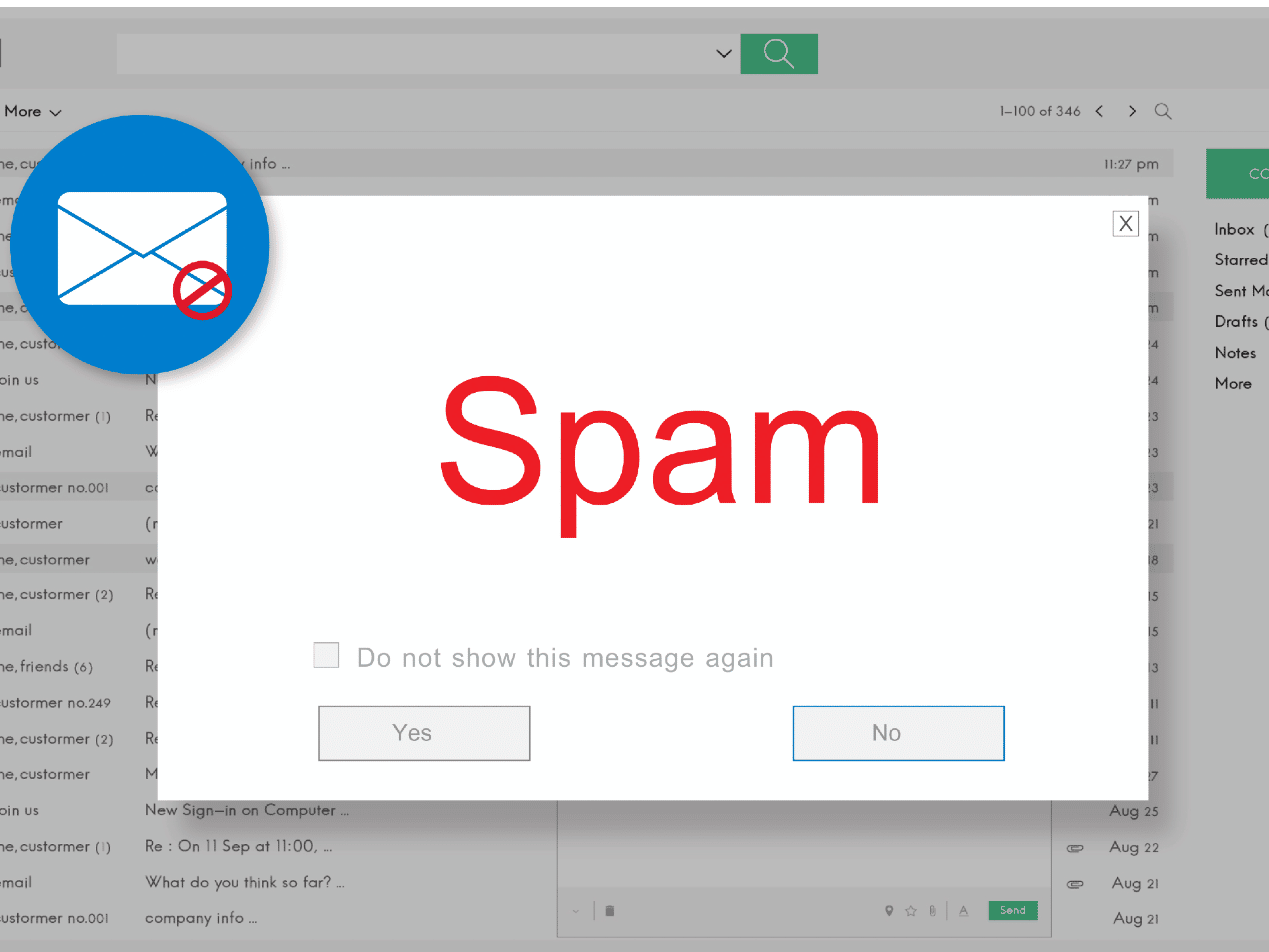
A spam trap , also referred to as a honeypot, is an email address used to identify and monitor spam . Internet service providers, corporations, and inbox service providers often use spam traps to catch spammers sending unsolicited messages. When spam traps work correctly, they can effectively catch spammers and block future unsolicited email. However, spam traps often affect valid email senders who are attempting to deliver genuine and valuable content. Healthcare organizations may unintentionally send legitimate email to spam traps which could affect email deliverability down the road.
SEE ALSO: Avoid the Spam Folder: Healthcare Email Marketing Deliverability Tricks
What are the different kinds of spam traps?
There are a few main types of spam traps that an organization may have on its list of subscribers: pristine spam traps, email addresses with typos, and recycled spam traps.Pristine spam traps
Pristine traps are email addresses that, while published on public websites, are hidden from view so that a normal visitor would not be able to see them. How do pristine spam traps end up on the receiving end of an email? Normally, they’re scraped from a website or were included on a list of purchased email addresses—both of which are bad email collection practices. Emailing a pristine spam trap could lead to being blocklisted.
Email addresses with typos
Inbox service providers and anti-spam software programs can flag typo spam traps with misspelled domains. For example, if your organization sends email to contacts such as xxx@yaho.com or xxx@gnail.com , these could very well be spam traps maintained by the inbox service provider or a blocklist provider. Although it may have been a genuine mistake, it can still lead organizations to unknowingly send email to a spam trap.
Recycled spam traps
Recycled spam traps were once legitimate email addresses used by real people that were later on abandoned. At some point, an inbox provider turned them into a spam trap. Inbox providers typically deactivate unused email addresses after a certain amount of time. If someone sends an email to a recycled spam trap, the inbox provider will return a hard bounce. This indicates to the sender that they need to remove this email address from their list. Responsible email senders will honor this policy, while others will choose to ignore the hard bounce. While the sender may not be immediately penalized for failing to remove the inactive email address from future communications, the inbox service provider may mark the sender as misbehaving.Why should healthcare organizations care about spam traps?
HIPAA compliant email marketing is a fantastic way to grow your business, establish a presence within your community, and communicate securely safely with patients. However, if your organization continues to send email to spam traps, you could unknowingly tank your email deliverability and undo the hard work of your email campaigns. When a healthcare organization sends email to spam traps, it could be considered a red flag to an inbox service provider that the organization has used bad practices to collect email addresses. Or, it shows that the organization is doing a poor job of maintaining its email list. Inbox service providers and anti-spam organizations may believe that a legitimate healthcare organization is sending unsolicited spam—when in reality it’s trying to relay valuable content. Once a business or organization is marked with a bad reputation for sending spam, it can affect email deliverability. Proper maintenance of an organization’s email list is vital to ensuring successful email deliverability and reliable communications with patients, and it can also lead to sustainable brand growth. However, a bad email reputation affects an organization’s ability to ensure recipients actually see their emails.
How your organization can avoid emailing spam traps
While there are a few different ways spam traps can end up on your email list, you can resolve these issues with good email list management. The following email best practices help you maintain a clean contact list.
- Regularly check email addresses on your list for typos. Some typos can be fixed, such as misspelled domains. Others may need to be completely removed.
- Validate new subscribers’ email addresses with a double opt-in for email communications. This ensures that legitimate email addresses are on your list.
- Use Paubox Marketing to segment and send secure emails and monitor email performance.
- Immediately remove bounced email addresses from your active mailing list.
- Identify spam traps with list segmentation. Separate clean email addresses from inactive ones, which could someday be converted into spam traps.
By regularly following these email best practices, you can avoid spam traps and ensure better visibility of your future email campaigns.
How do I know if I’m emailing spam traps?
If you want your healthcare organization to maintain a good reputation, it’s crucial that you monitor your email delivery rates. If delivery rates have been on a steady decline or have recently plummeted, there’s a good chance you have spam traps on your email list. Or, if your organization’s IP address or domain has been placed on a deny list, this is also an indicator that your organization has likely been sending email to spam traps.
Use Paubox Marketing to avoid spam traps
Paubox Marketing is a HIPAA compliant email marketing solution for healthcare organizations that want to safely and securely utilize effective email marketing campaigns. With Paubox Marketing’s real-time analytics, you can send and track email performance. You can use the data to remove bounced email addresses and harmful spam traps from your list, and ensure your email is seen by real subscribers. Get started today with a Paubox Marketing freemium plan option and send an unlimited number of marketing emails to your first 100 contacts for free. Questions? Reach out to our sales team and we’ll be happy to provide more information regarding our email marketing solutions.
Subscribe to Paubox Weekly
Every Friday we'll bring you the most important news from Paubox. Our aim is to make you smarter, faster.




